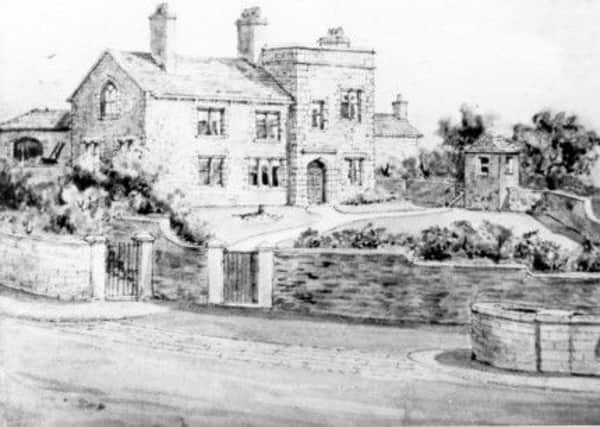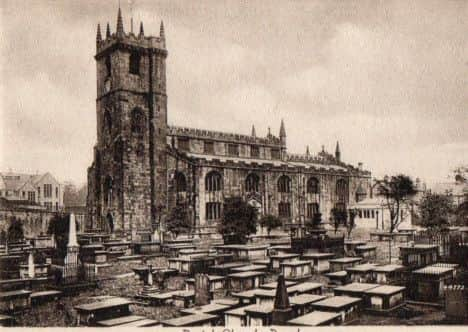First workhouses established to help the poor


We might not regard our town as historic in the same way as, for example, Warwick and Arundel with their ancient charities, the consequence of medieval power and wealth, but the better-off residents of Burnley have long since attempted to provide for their poorer neighbours.
Since the coming of the Welfare State, after the last war, we have forgotten just how important charity was for many people. In the two generations that have passed since then, we have got used to not paying for the services of a doctor, a hospital appointment or even a stay on hospital. Similarly, we have forgotten about the once very necessary Benefit Burial Societies, the Grammar School Scholarships and Exhibitions that were once available for students from Burnley at university and a host of other charitable organisations that once existed and provided much needed funding in our town.
Advertisement
Hide AdAdvertisement
Hide AdOf course the role of charitable giving has not come to an end. I have the honour to be chairman of the Acorn Fund, a charity which still undertakes very important work in Burnley. Until recently, the greater part of the present charity was known as the Sick Poor Fund, its original intentions encapsulated in those few words. In addition, the town still benefits from the Stocks Massey Bequest which was founded in 1909 although it did not become active until a few years later.


Mention of the Grammar School Scholarships puts me in mind of the days when these were a necessary feature of education in Burnley. I have, in front of me, the “Abstract of the Treasurer’s Accounts of the County Borough of Burnley for 1930”.
It contains details of the four main awards, the Master-Whitaker Exhibition, the Livesey Scholarship, the Milner-Grant Scholarship and the Phillip’s Scholarship. There were others, the Wilshaw Scholarship and the TC Skipper Scholarship to name but two but the Grammar School itself was financed, at least in part, by a charitable gift, a tithe rent on Cockeridge Farm, Briercliffe. In 1930 the rent produced only 15 shillings and two pence but, for many years, the charity had contributed to the salary of the headmaster.
Though there had doubtless been examples in Burnley of common Christian charity going back to earliest times, we know little of the subject until the early modern period, the 16th and 17th Centuries. Records, such as the Church Registers, which in Burnley date from the second half of the 16th Century, make reference to “a poor woman found dead at Horelaw”, “a poor man found dead in Habergham Eaves” and to “two poor children”.
Advertisement
Hide AdAdvertisement
Hide AdThese, however, merely confirm the existence of poverty, something which is never far from the reality of human life. That relief for the poverty of the kind indicated was necessary was recognised by the Elizabethan Poor Law, an early attempt at locally administered intervention which was effectively managed by the Church. It replaced the role of monastic houses which had been suppressed in the reign of Henry VIII. They had provided relief for the sick and elderly and even ran schools, though these were often for the sons of the wealthy.
The abbey at Whalley had a role in this. It ran a leper hospital at Edisford Bridge, on the site of the present inn, and there was a small hospital and school in the abbey precinct. The former Whalley Grammar School, now part of Clitheroe Grammar School, could have claimed to have been founded by the monks of the abbey.
No details of similar foundations survive in Burnley, as early as this, but we do know about numerous private gifts, usually small, made by the better off members of local society to their less well off contemporaries. One of the former was Dean Nowell of Read who, in 1567, gave alms “to a poor man of Burnley Parish”, to “a poor maiden at Mr Towneley’s gate” and to “seven poor at Towneley”.
Richard Shuttleworth, of Gawthorpe, is another example. His account books for the early 17th Century have survived. In 1600, he gave 15 shillings for the relief of the poor of Ightenhill and in 1618 he gave seven shillings and six pence for the relief of Burnley paupers. There are numerous examples of Richard’s charitable works in his accounts.
Advertisement
Hide AdAdvertisement
Hide AdOthers regularly gave money to the poor. In 1629 Barnard Bancroft gave the more substantial sum of £8 “for the poor” and, in 1636, Richard Couthest gave £2 for a similar reason.
At about this time a number of long-lived local charities were established. One of these was the Rochester Dole of 1649. It was set up by Robert Halstead of Rochester though he had local connections. His intention was to provide for the relief of the poor in Burnley and Worsthorne. I noticed, only the other day, the Trustees of this charity were due to have a meeting.
In 1672 a John Halstead of Broadbank, Briercliffe, bequeathed £3 a year from a rental of his Moseley Hill estate, near Burnley, to be distributed annually on St Thomas’s Day in five shilling doles to the poor of Briercliffe and Entwistle. This charity is still extant, presented annual doles to the late 1950s and, though the funds are not now collected, the charity is in the hands of Briercliffe Parish Council. However, other charities were established with more funding. One of these was the 1693 Sherburne Bequest of £190 which has since been lost.
Perhaps the best known of these charities was the Elizabeth Peel of Bridge End Charity which is memorialised on a tablet on the walls of St Peter’s Church, Burnley. Miss Peel was a member of the family that produced Sir Robert Peel the Victorian Prime Minister. In 1800, she left £1,244. 15s. 0d in her will to be invested to produce an income to be distributed, in four shilling doles, to the poor of Burnley and Habergham Eaves.
Advertisement
Hide AdAdvertisement
Hide AdSimilar charities were established in the early years of the 19th Century when Burnley was beginning to expand into the industrial town it later became. These included the Hindle Charity of 1804, the Stevenson Charity of 1805, the Hargreaves Charity of 1814 and the Burnley Ladies Charity of 1820. The provisions of this latter charity were to make available food and warm clothes for poor women during confinement. Rather than there being a single benefactor this charity was run by the wives of some of Burnley’s leading citizens. From their friends they collected annual subscriptions which were then distributed to those in need of very specific support.
As the 19th Century progressed and Burnley continued to grow, the work of meeting the needs of the local poor changed as it did elsewhere in the country. Attitudes to the services needed by the poor, and how they were to be provided, also changed. We have already mentioned the Elizabethan Poor Law which, by this time, had been applied, with a number of changes, for over 200 years. In this system every parish was responsible for its own poor but, in our part of the world, that was very difficult to implement as Burnley was but a Township in the vast Parish of Whalley.
Here, each Township had its own poor house, often known as the workhouse, though sometimes groups of Townships joined together to resolve what they should do with the poor. The choice was between two kinds of relief – in door relief and out door relief. The first was relief in the poorhouse, usually reserved for the sick, elderly and very young. The second was relief, through money, food and heating etc but in the home of the pauper.
Burnley’s first workhouse was in the Brennand Street area and we know it was operating in the 1730s. There was another early workhouse in Padiham/Simonstone and a third in Briercliffe. The latter was situated in Haggate but what makes this remarkable is that an account book from this workhouse for the 1750s has survived.